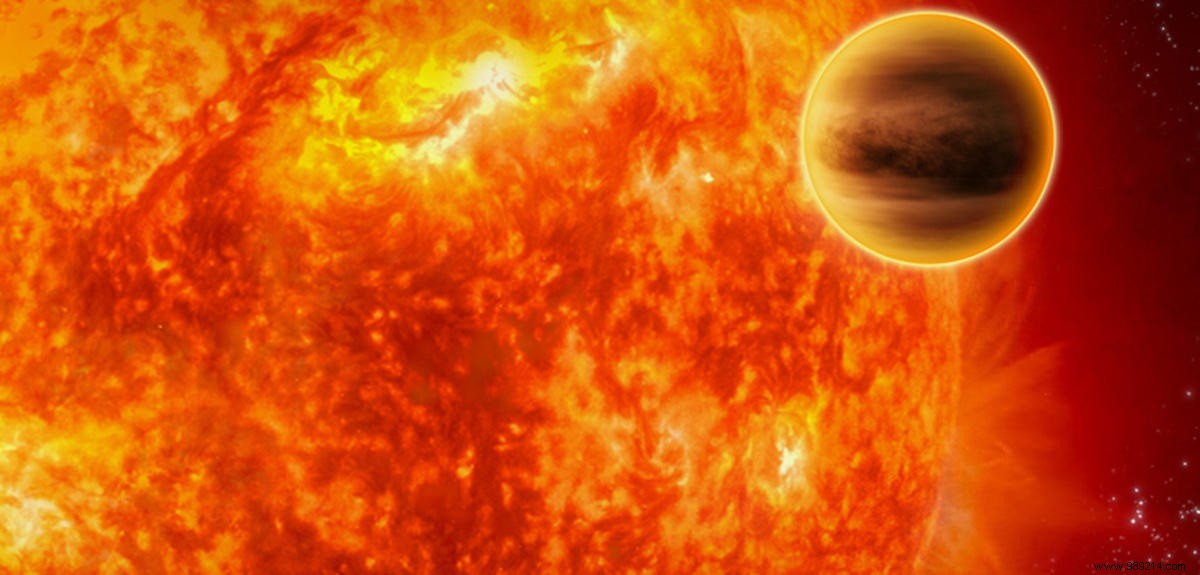A team of astronomers announces that they have detected the first Jupiter-like planet shrouded in a cloudless atmosphere. The results of this study are published in The Astrophysical Journal Letters.
WASP-62b is a gas giant first detected in 2012. However, its atmosphere had never been closely studied until now. As part of his thesis, doctoral student Munazza Alam, from the Harvard-Smithsonian Center for Astrophysics, worked on the characterization of exoplanets, focusing mainly on the composition of their atmosphere. WASP-62b found 575 light-years from Earth , was one of his targets.
WASP-62b is what is called a "Hot Jupiter". In other words, it is a planet similar to Jupiter, but orbiting very close to its star. Unlike "our" Jupiter, which completes one revolution of the Sun in about twelve years, this one completes one rotation around its star in only four and a half days. This closeness to its host makes it extremely hot, hence the name "Hot Jupiter".
As part of this study, Alam relied on the Hubble telescope to perform spectroscopy analyzes (or the study of electromagnetic radiation) in order to probe the different chemical elements contained in its atmosphere. The researcher particularly focused on the presence of sodium and potassium.
Although he found no evidence of potassium in the data collected, the presence of sodium was remarkably clear (thanks to the absorption lines or "fingerprints" of the element). The presence of clouds or haze in the planet's atmosphere would normally have obscured the full signature of sodium and in general astronomers can only make out small hints of its presence. Thus, the fact that this element appears so clearly in the data indirectly testifies to the absence of clouds in the atmosphere of hot Jupiter.

The discovery is interesting in that these "cloudless planets" are extremely rare. Astronomers estimate that less than 7% of exoplanets are lacking. WASP-96b, the first and only other known exoplanet with a clear atmosphere, was only discovered in 2018.
Naturally, studying these exoplanets could lead us to a better understanding of how they form. These atmospheres also facilitate the study of their chemical composition. The researchers now hope to be able to rely on the James Webb Telescope (JWT), whose launch is still scheduled for next October, to probe the atmosphere of WASP-62b in greater depth .